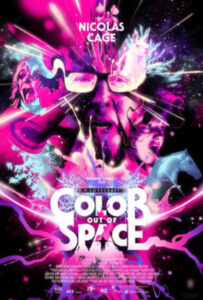‘Blade’ has a sharp start, but ends up dull

PHOTO PROVIDED Wesley Snipes starred as the titular character of “Blade” in 1998.
I don’t watch a lot of movies or television, at least compared to most people. When I do, I am frequently drawn to gothic pieces — such as “Underworld,” which I wrote on last October.
“Blade,” in many ways, is a predecessor of sorts… not linked insofar as I know, but many of the general plot points seemed eerily reminiscent, and some of the cinematography felt almost to the point of homage on the part of “Underworld.”
In fact, several times at the start of the movie I found myself going, “oh, so that’s a reference to this, got it.”
That’s not a bad thing — “Underworld” may be lacking in many areas, but gothic atmosphere is not one of them.
And “Blade” oozes atmosphere, from the opening scenes of a bloodsoaked nightclub hidden inside a meat factory, to the final scenes in an ancient crypt.
Wesley Snipes’ performance as the titular half-vampire is excellent throughout. As someone who had never seen this film before but had heard it will be getting a remake at the hands of Marvel, I found myself thinking that it was rather a shame they opted for a younger actor, despite Snipes stating that he would like to revisit the character.
Even only having seen the film once, and never the sequel (I’ve been told not to bother with the third film), I can’t imagine someone else stepping into Blade’s boots.
The other standout on the cast is Stephen Dorff, who portrays Blade’s antagonist Deacon Frost.
Dorff manages to wield just enough charisma throughout the film to feel authentic and interesting, while still retaining a savage, unhinged edge at all times.
I found the rest of the cast uninspiring. Kris Kristofferson’s Whistler is suitable but ultimately less engaging for me than similar characters I’ve seen in other media at this point, while N’Bushe Wright’s Karen starts off strong, but ends up accomplishing little of significance on-screen. She feels unfinished — a partial character given screentime only to act as a vehicle for the plot, receiving very few cool moments of her own in a movie that lives and dies by its cool-factor.
Precious little about the setting is actually explained in this film, leaving the viewer wondering more about what is going on — not problematically so nowadays with the proliferation of vampire media drawing from roughly similar mythos — but I could see a watcher at the time the movie was released having difficulties at points.
Vampires are infiltrating the world, blah blah blah, they own corporations, blood banks, the police, blah blah blah, so on.
But it isn’t until a good chunk of the movie in that Frost notes about needing the blood of the 12 houses — something far more interesting that the movie decides to never really get into, beyond using it as an excuse for Frost to kill off the elder vampires in suits that meet in a dark room interminably while they wait for plot to happen.
One of the coolest things about Frost as a villain is that while many movies use the archetype of the young buck character who sees things differently from the old leadership and here’s how he’s going to suceed while his elders failed — “Blade” actually goes to some lengths to show you /how/ he’s different.
Most notable in this is his embrace of technology to help decode ancient texts — something the elders had given up on translating long ago. Even from a wardrobe standpoint, he’s always shown differently than the other vampires, both elders and members of Frost’s crew, highlighting that this is someone the audience is supposed to pay attention to.
Unfortunately, the longer the movie goes on, the less engaged I felt myself becoming. I was hardly surprised when Blade’s mother turned up — or when Frost revealed himself as the one who bit her presumably as an act of random evil.
Her portrayal as a soldier of Frost, willfully rejecting her role as Blade’s mother couldn’t have left me less interested.
Frost’s La Magra ritual was neat in theory, but poorly executed and ruined by meaningless 1998 computer-generated animations that just look corny today — and probably didn’t look much better 23 years ago.
The final battle between Frost and Blade was anticlimactic, involving a science mcguffin and shockingly minimal actual conflict.
Sadly, I was left with the feeling that despite a strong sense of atmosphere and cool favor, the movie ended up being somewhat underwhelming.
The hero movie has come a long, long way since 1998, just in terms of basic execution and payoff, and I do feel there are strong bones here. Before long I’ll likely watch the sequel to see if it surpasses the original.
When looking up the actors’ names to write this article, I did notice something else on IMDB that caught my eye. The film’s story was written by David Goyer, who also wrote the story for both “Batman Begins” and “The Dark Knight.”
It’s interesting to reflect on those movies and see many of the same core ideas in “Blade.” I can’t help but wonder if, on some level, Ledger’s Joker drew from Deacon Frost — informed by the ten years of writing experience and maturity that separated the films. One of the main differences, of course, is in motivation and ambition — Frost is driven and megalomaniacal, whereas Joker is perhaps famously at this point, “just a dog chasing cars.” But many other similarities exist, especially in the way their storylines cast them as outsiders rising to the occasion and the unorthodox methods they use to enact their goals.
“Blade” is very much rated R for many, many reasons, and is available for streaming on HBO Max.
— — — —
Arianna McKee is an associate editor for The Express.




